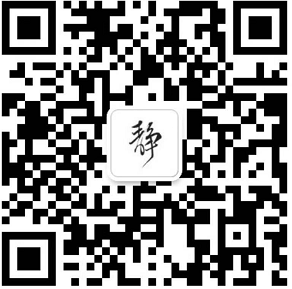On the morning of March 1st, Shuji Nakamura, the 2014 Nobel Prize Winner in Physics, a Japanese-American electronic engineer and inventor, and professor at the University of California, Santa Barbara (UCSB), delivered a lecture entitled LED Lamps Light the 21st Century to teachers and students of SWUN. With the lecture being one of the important activities of the National Foreign Expert Project, Prof. Shuji Nakamura shared his scientific exploration on the road to the invention of the blue LED and the winning of the Nobel Prize in Physics. Zeng Ming, President of SWUN, extended a warm welcome and sincere gratitude to Prof. Shuji Nakamura, and Ding Keyi, Vice President of SWUN, presided over the procedures of the lecture.
The students waited eagerly well before the start of the lecture, in front of the Nova Theater at the Airport campus, for Prof. Shuji Nakamura's coming and greeted the professor with great enthusiasm upon his arrival.
On behalf of SWUN, President Zeng Ming extended a warm welcome and sincere gratitude to Prof. Shuji Nakamura, stressed that the pursuit of science and truth was the common pursuit of all universities across the globe, and expressed the hope that Prof. Shuji Nakamura and SWUN would develop a long-term relationship of exchanges and cooperation, which is to play a positive and leading role in the university's personnel training, scientific research, and other related endeavors.
In the lecture, Prof. Nakamura introduced the major revolutionary impacts of the invention of the blue LED on lighting applications in areas such as efficient lighting and displaying, and shared about the hardships and the tough processes he had experienced in inventing the blue LED and about the key technical problems he encountered and overcame. The large audience of teachers and students of different ethnic groups were greatly impressed by Prof. Nakamura's wonderful presentation and were deeply touched by his scientific spirit, tenacity, and perseverance. After the lecture was over, Prof. Nakamura interacted with the teachers and students, whose questions he patiently and carefully answered, and whom he encouraged to adhere to their enthusiasm in science, and climb up to the great heights of science!
In the afternoon, Prof. Nakamura visited the Documentation Center, the Innovation Lab of the College of Electrical & Information Engineering, and had in-depth exchanges with teachers of the College.
Shuji Nakamura was born on May 22, 1954, in Ikata, Japan. He graduated from the University of Tokushima and is a Japanese-American electronic engineer and inventor specializing in the field of semiconductor technology, a professor at the Materials Department of the College of Engineering, University of California, Santa Barbara (UCSB). In 1989, he started the research of blue LEDs using group-III nitride materials. In 1993, he joined the Nichia Corporation, where he developed the first high brightness gallium nitride (GaN)-based blue/green LEDs, which made him well known. At that time, many considered a blue LED too difficult to create, because there were only the red and the green LEDs in the past 20 years. On Oct. 7th, Shuji Nakamura, together with Isamu Akasaki and Hiroshi Amano, became one of the three recipients of the 2014 Nobel Prize in Physics “for the invention of efficient blue light-emitting diodes”. He was regarded as the inventor of the blue LED and was heralded as the 21st Century Edison by the Royal Swedish Academy of Sciences.
Shuji Nakamura holds more than 100 patents and has published more than 200 academic papers. Because of his outstanding achievements in the LED field, Prof. Nakamura has received a number of awards, including The Nishina Memorial Award (1996), the IEEE Jack A. Morton Award (1998), the British Rank Prize (1998), and the Benjamin Franklin Medal Award (2002). He was elected a member of the U.S. National Academy of Engineering (NAE) in 2003. He received the Finnish Millennium Technology Prize in 2006.
Red and green light-emitting diodes had been around for decades, but without blue light, white lamps could not be created. The invention of efficient blue light-emitting diodes (LEDs) solved the problem and launched a fundamental transformation in light technology, which has “enabled bright and energy-saving white light sources.” “Thanks to the blue LED we can now get white light sources that are very energy efficient with very long lifetimes”, said Per Delsing, chairman of the physics Nobel committee.
The high-brightness blue LED helped the emergence of large-screen color displays in the 1990s, and around 2000, contributed to the phone screen colorization. The blue LED technology has become a base for the development of blue lasers, which made recording high-definition programming a reality.
Through relentless research and exploration done by scientists, LED manufacturers can produce the three primary colors (red, green and blue) LED, having 16 million colors available. Humans can use high brightness, low heat, long life, non-toxic, recyclable and more environmentally friendly white light, reducing lighting costs worldwide, and make a significant contribution to the well-being of mankind. “Incandescent light bulbs lit the 20th century; the 21st century will be lit by LED lamps”, the Royal Swedish Academy of Sciences stated.






Original Article From: http://english.swun.edu.cn/News.htm
Learn More and Apply: Southwest University for Nationalities




















